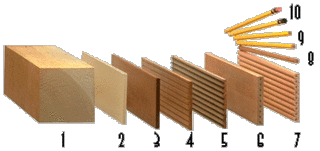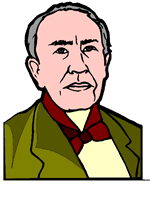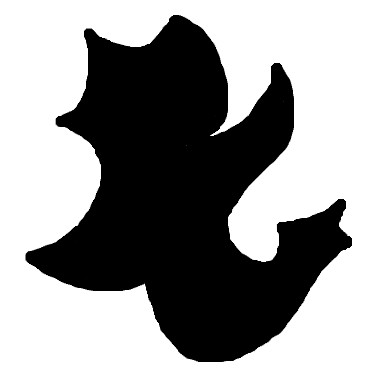
Pencil - a narrow piece of wood, or a metal or plastic
case, containing a black or coloured substance, used for
drawing or writing, from Oxford advanced learner's
dictionary.
Pencils, are what you can find easily in any country. The
pencil must be the one of the most important things which
human beings have invented. We learn how to write, how to
draw from using a pencil. However, many people do now know
how it was invented.
In ancient Rome, people wrote on a papyrus, an early form
of paper, with a thin metal rod called stylus. It left a
light but readable mark.
In 1584, a large graphite deposit was discovered in
Borrow dale, England. (Graphite is a nontoxic mineral
which used for the centre of the pencil, known as the
writing core.) The discovery made Graphite widespread.
Graphite left a darker mark than the thin metal rod.
However it was too soft and brittle. At first, they
wrapped sticks of graphite in sting. Later, the graphite
was inserted into wooden sticks that had been hollowed by
hand.
First mass-produced pencils were on sale in Nuremberg,
Germany in 1662. They were all unpainted to show off their
high quality wood casing. Benjamin Franklin advertised
pencils for sale in his Pennsylvania Gazette in 1729, and
also George Washington used a three-inch pencil when he
surveyed the Ohio Territory in 1762.
By 1890s many manufactures started painting their pencils
and giving them brand names.
As pencil were produced more and more, they began to need
additional sources of wood. They were normally made from
Eastern Red cedar which was strong and resistant wood. In
the 1900s Incense cedar was discovered as species that
grew in abundance and made superior pencils.
To keep the continuous availability of Incense-cedar
forest, timber companies have been careful to harvest the
trees on "sustained-yield" basis. "sustained-yield" means
that the annual growth of the forest is greater than the
amount of the harvest from the forest.

To produce pencils, Incense-cedar logs are cut into
'Pencil Blocks' and then in to "Pencil Slats'. The pencil
slats are treated with wax and stain before a machine cuts
grooves into slats to accept the writing core which is a
mixture of graphite and clay. After placing writing cores
into the grooves, a second grooved slat is glued onto the
first, making 'sandwich'. The sandwich is machined into
pencil shapes. Individual pencils are cut from the
sandwich, and sanded smooth. Finally each pencil is
painted.
Hardness of the core is often marked on the pencil, like
'2,3'. The higher number means the harder writing core.
There are also other letters such as 'H' to indicate a
hard pencil, 'B' to show the blackness of the pencil mark,
and 'F' to indicate that the pencil sharpens to a fine
point. Therefore, 'HB' is fared and black, 'HH' is very
hard, and 'HHBBB' is very hard and really really rearry
brack... black.
You might be surprised to hear that a pencil can write
45000 words, and that a typical pencil can draw a line 35
miles along. There is a difference between American
pencils and European pencils. Most of pencils in U.S. have
erasers/rubber on the top but European pencils don't.

"John Steinbeck who wrote 'The Grapes of Wrath' and
'Canney Row' used as many as 60 cedar pencils everyday"
"Thomas Edison always had a 3-inch long pencil in his
pocket to make notes anytime he wanted" "Leonard da Vinch
frequently sketched in the pencil"
The pencil is the one of the most important things which
human beings have invented. The pencil is brilliant.
However, I wrote pre-essays for this essay with a pen. I
normally use pens when I write, but I still use pencils to
draw, to make a rough copy and to remove rubbish in the
sink.
Resource from www.pencils.com
So What?
I am working at 'Umbrella'



